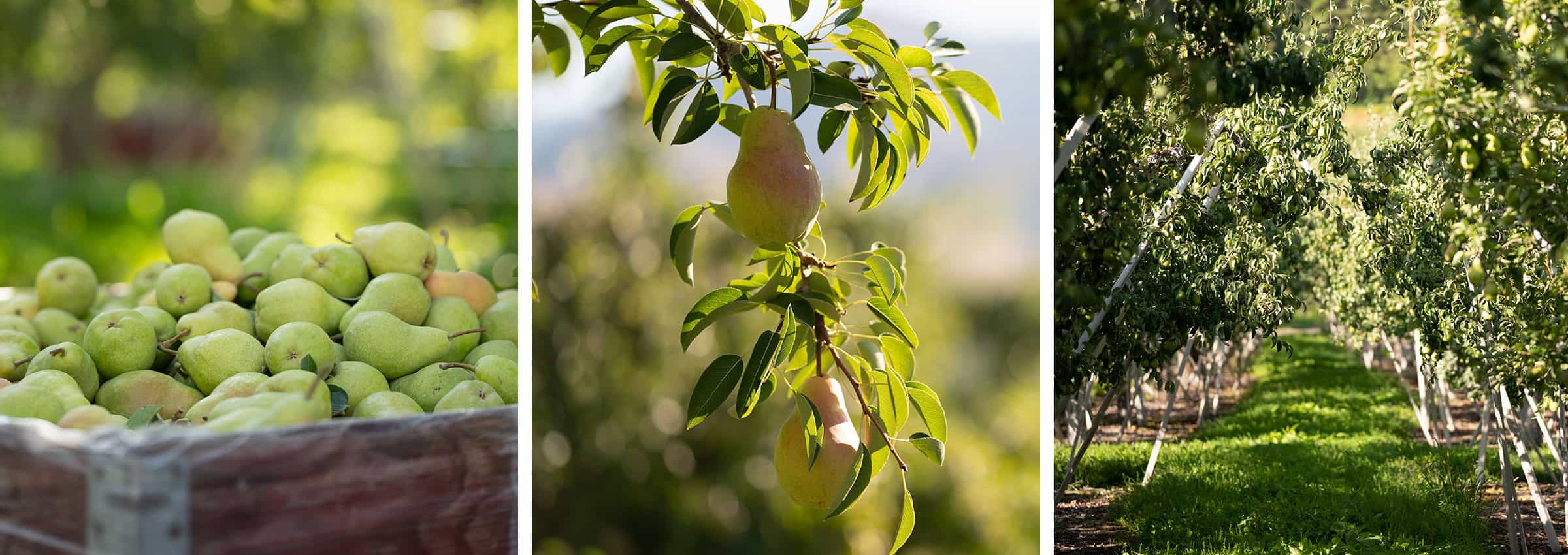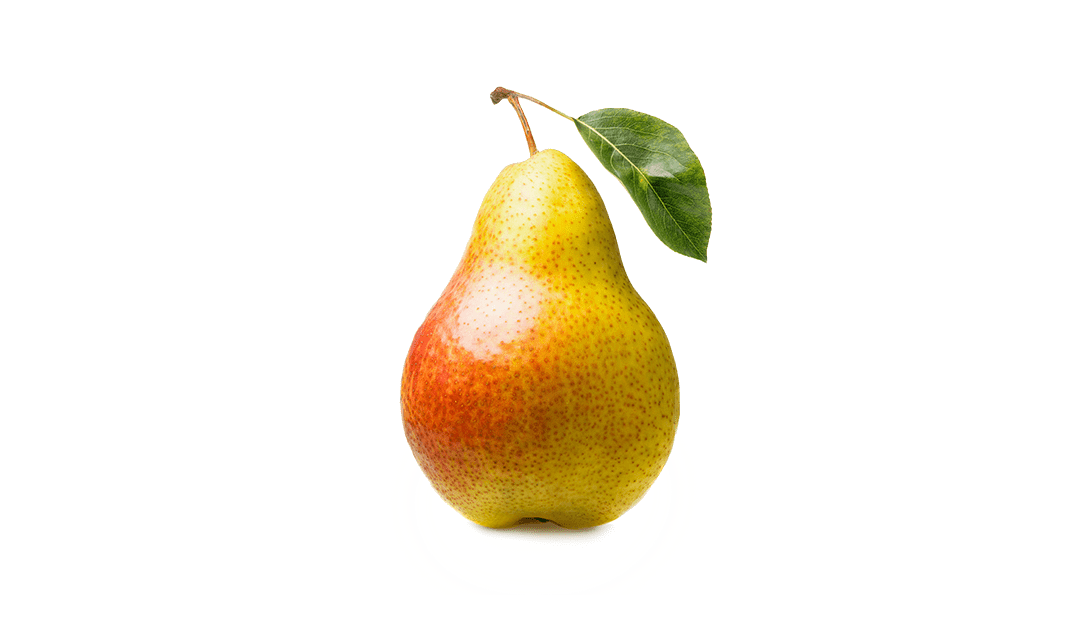Our Pears
Asian Pear
Availability
September-January
Usage
The Asian pear’s crisp and juicy texture makes it excellent for snacking or salads.
Bartlett Pear
Availability
August-March
Usage
Snacking, salads. Most popular pear for canning.
Bosc
Availability
September-May
Usage
The firm texture of the Bosc makes it an excellent choice for baking, broiling, or poaching. It can also be enjoyed for fresh snacking or in salads.
Comice
Availability
September-March
Usage
Because of the exceptional juiciness of the Comice, it is recommended only for fresh eating.
Forelle
Availability
September-February
Usage
Snacking is the best way to enjoy a Forelle due to its small size and exceptional sweetness.
Green Anjou
Availability
Year round
Usage
An excellent all-purpose pear, Anjous can be used in cooking or baking or enjoyed fresh as a snack or in salads
Red Anjou
Availability
September-June
Usage
Great for cooking, baking, canning, and of course fresh eating.
Seckel
Availability
August-February
Usage
Excellent for snacking and lunch boxes. They can also be canned whole.
Pear Nutritional Value
Pears are an excellent source of fiber and vitamin C for just 100 calories per medium-sized pear. Pear nutritional benefits also include sodium free, fat free, and cholesterol free. Each medium sized pear contains approximately 8% of your daily need for vitamin C.
One of the leading fruit sources of fiber
provides 21%
of the daily value.
pear eating tips
To maximize your pear-eating experience, follow these simple tips for selecting, handling, storing and preparing fresh pears.
Tip One:
Pears are an excellent source of fiber, providing about 21% of the daily recommended value!
Tip Two:
Pears are naturally sodium free, fat free, and cholesterol free.
Tip Three:
The skin of the pear contains most of the fiber found in a pear, be sure to leave the skin intact to enjoy the added flavor and nutritional benefits.
frequently asked questions
How do I select and ripen pears?
Pick pears that are free of cuts and blemishes to the skin. Keep in mind that surface russeting (brownish areas on the skin) is caused by weather and does not affect quality or flavor.
How do I ripen pears?
Pears are picked when they are fully mature, but not ripe, leave pears at room temperature until the neck of the pear responds to a gentle pressure.



